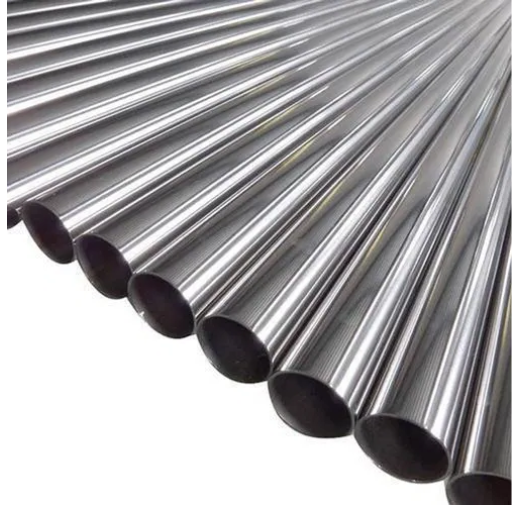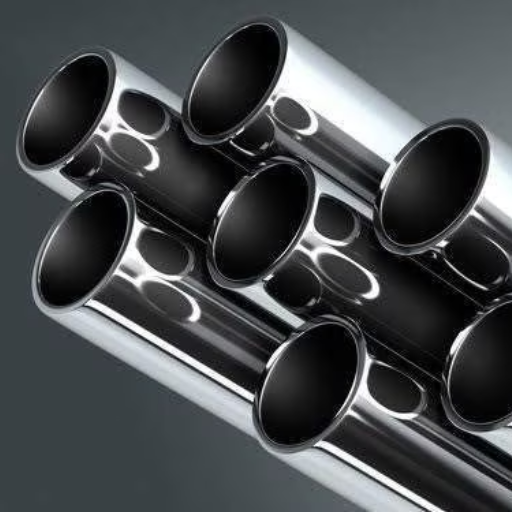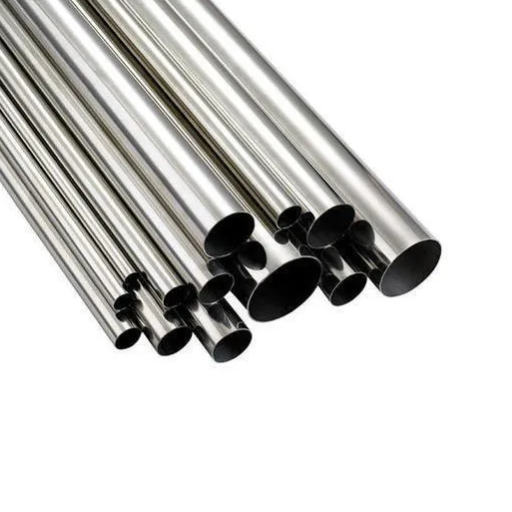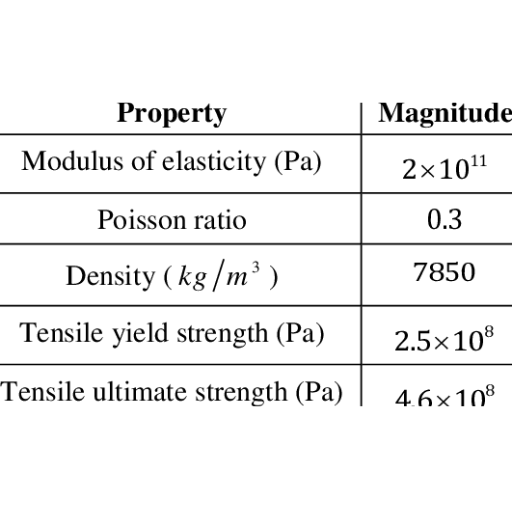Looked at from Mark’s eyes, precision engineering is a world of stainless steel parts and tools. To properly analyze the differences between them, we first address the most defining characteristics of the two: their differences, and the results of their semi- or volumetric weight deduction: their density. With this information, we can determine the alloy’s capabilities and characteristics, such as which forms and applications it can serve best, especially considering its composition and structure.
What is the Density of Stainless Steel?

The density range for the alloys and grades of stainless steel is between 7.75g/cm³ to 8.1 g/cm³. Grade 304 of stainless steel has a density equal to about 8.0 g/cm³, and grade 316 is a bit more dense, approximately 8.03 g/cm³. It is worth noting that these differences in density stem from changes within the number of alloying constituents, namely nickel and molybdenum, whose value is determined by the scope of properties, drawbacks, and applications of the material at hand.
Definition and Importance of Density
Essentially, density is how much a substance’s mass is packed into a given volume. For instance, in stainless steel, density is an important parameter because it tells me about the material’s strength, durability, and whether it is useful for particular applications. It affects how the steel performs in construction, manufacturing, or aeronautics where weight and structure are very critical. With density, I can now make better decisions on which grade of stainless steel will my project need.
Factors Affecting the Density of Stainless Steel
A few considerations regarding the composition and structure of stainless steel explain the factors that impact its density.
- Alloying Elements: The addition of elements like nickel, chromium, molybdenum, and manganese has an impact on the density of stainless steel. For example:
- Chromium (C) increases corrosion resistance. Its density is estimated to be about 7.19 g/cm³.
- Nickel (Ni) increases ductility together with the strength of alloys. Its density is about 8.91 g/cm³
- Molybdenum (Mo) enhances toughness and resistance to corrosion. Its density is about 10.2 g/cm³.
- Grade Composition: Different grades of stainless steel are bound to have one of the alloying elements in different proportions. This results in differences in density. For instance:
- 304 Stainless Steel has an approximate density of 8.00 g/cm³.
- 316 Stainless steel (with a greater amount of molybdenum) has a density of about 8.03 g/cm³.
- Crystal Structure:
- Subordinate features include a higher density of austenitic stainless steels with face-centered cubic structure.
- Lower density of Ferritic and martensitic stainless steels with body centered cubic structure is a subordinate feature but will also help.
A comprehensive understanding of these different factors and their correspondin technical details enables accurate and tailored crafted material selection for specific project requirements.
Comparing the Density of Metals and Alloys
When analyzing the density of metals and alloys, the elemental makeup, the processing techniques used, and the crystal structure all need to be taken into account. The following excerpts illustrate the most fundamental insights with the help of reputable sources:
- Density of Common Metals:
- Aluminum: Around 2.70 g/cm³. Relatively light and frequently employed in the aerospace and automotive sectors owing to its impressive strength-to-weight ratio.
- Iron (Pure): Approximately 7.87 g/cm³. As the foundation of most steel alloys, it is known for its durable and structurally robust nature.
- Copper: Approximately 8.96 g/cm³. Famous for its excellent thermal and electrical conductivity.
- Lead: Approx. 11.34 g/cm³. Famous as the densest metal, and is frequently used in radiation shielding.
- Density of Alloys:
- Stainless Steel (Austenitic): Ranges from 7.90 to 8.03 g/cm³ depending on the specific grade and alloying elements like nickel and chromium.
- Brass (Copper-Zinc Alloy): Normally hovers between 8.40 and 8.73 g/cm³ based on the quantity of zinc.
- Titanium Alloys (e.g., Ti-6Al-4V): Approximately 4.43 g/cm³. Known for having the best strength-to-weight ratio among other alloys, making them ideal for aerospace applications.
- As can be noted in the previous values mentioned in the table, the alloys tend to have relatively lower density figures than the pure metals.
- Technical Parameters:
Crystal Structure:
- Face-Centered Cubic (FCC): Aluminum and austenitic stainless steel, for instance, contain FCC which helps them attain greater density as they have closely packed atomic structure as opposed to those metals with BCC crystal system.
- Body-Centered Cubic (BCC): Found in metals such as ferritic stainless steels and pure iron, resulting in moderately lower density values.
Alloying Elements:
- The presence of heavier elements such as tungsten or lead increases the density of the alloy.
- The presence of light elements such as magnesium lowers the overall density of the alloy.
Processing Conditions:
- The level of heat treatment and forging applied can change the microstructure and therefore the porosity and atomic arrangement, which in turn alters the density.
Considering these factors enables engineers and materials scientists to satisfy the precise design requirements of a project in terms of mechanical, thermal, and density specifications.
How Does Stainless Steel Density Vary Among Grades?

Grade of stainless steel does impact its density owing to the grade’s chemical structure. Austenitic stainless steels like grade 304 and 316, for example, normally have around 8.0 g/cm³ of density. Contrarily, 430 or 420 ferritic and martensitic grades have approximated a lower density of around 7.7 – 7.8g/cm³ because they are lower in nickel content. Stainless steels that are duplex, which merge austenitic and ferritic structures, usually have densities ranging from 7.8 to 7.9 g/cm³. These differences showcase the impact of alloy metals like nickel, chromium, and molybdenum have on the density of different grades of stainless steel 04
Understanding the Grade of Stainless Steel 304
Stainless Steel 304 is one of the most widely used austenitic stainless steels, well known for its excellent versatility and good corrosion resistance. This steel grade contains chromium (about 18-20%) and nickel (8-10.5%), which strengthen the alloy and give it oxidative resistance in different environments. It is non-magnetic, has a density of around 8.0 g/cm³, and possesses good formability and weldability, which makes it useful in a variety of industries, including the food industry, chemicals, and even construction. It does, however, perform poorly in extremely salty or chlorinated conditions, but does well in moderately acidic and oxidizing environments.
Properties of Grade 316 Stainless Steel
Grade 316 stainless steel is highly sought after for its remarkable corrosion resistance in marine and chlorine-rich environments due to its high molybdenum content. It can endure extreme temperatures without losing its exceptional tensile strength and toughness, while also being highly resistant to pitting and crevice corrosion. This stainless steel grade also has good machinability and is easily welded, making it useful in industrial and commercial fields. Its chemical durability makes the alloy ideal for food processing or manufacturing medical equipment.
Difference in Density between 304 and 316
The addition of molybdenum to the chemical composition of 316 stainless steel is responsible for the difference in density between it and 304 stainless steel. Following industry guidelines, the density of 304 stainless steel is roughly 8.00 g/cm³ and 316 stainless steel is higher, around 8.03 g/cm³. The difference is due to molybdenum’s greater corrosion resistance but more mass. The difference in density is so small that 304 and 316 have identical performance, and so the choice between them is performance driven rather than weight driven.
Why is the Density of Stainless Steel Important for Applications?

Because stainless steel’s density directly impacts its weight, which in turn affects the design and functionality of a component or structure, its density is critical for certain applications. Weight savings in the aerospace and automotive industries, for example, lead to better fuel economy and enhanced performance. Furthermore, the density of a material is crucial for calculating the material requirements, load-bearing capacity of the built structure, cost estimation, and precise value calculations for various functions. This understanding shifts the focus to the optimal grade of stainless steel made for demanding engineering applications.
Impact on Mechanical Properties and Fabrication
The mechanical properties and fabrication characteristics of stainless steels are influenced by density quite significantly. Construction and heavy machinery stainless steels are denser, which is beneficial for strength and durability, but negatively affect fabrication because the weight will require more specialized equipment to enable efficient processing. On the other hand, less dense alloys are favorable in their malleability and machining, which allows for intricacy in design. The balance of density in conjunction with other fabrication factors is vital for engineers to optimize the material selection and manufacturing processes to perform efficiently and practically.
Influence on Corrosion Resistance
The composition and environmental exposure of a substance deeply affect its corrosion resistance. My understanding is that the atomic construction’s permeability to corrosive agents is reduced in denser materials, therefore exhibiting better natural corrosion resistance. Regardless of density, though, surface treatments and alloying improve the property significantly. The material also must be chosen considering humidity, salinity, and temperature changes,as they can accelerate the corrosive nature of the material. Striking the right balance ensures compelling performance and optimized longevity in industrial settings.
Role in Steel’s Tensile Strength and Hardness
It is composition and heat treatment that most affect steel’s tensile strength and hardness. In my opinion, carbon and manganese increase strength, while chromium or vanadium bolster hardness. Heat treatments like quenching and tempering refine the microstructure to the proper balance of toughness and tenacity. Knowing these factors helps ensure the steel fulfills the requirements of its purpose.
How to Calculate the Density of Stainless Steel?

You can determine the density of stainless steel using the following formula:
[ \text{Density} (\rho) = \frac{\text{Mass} (m)}{\text{Volume} (V)} ]
- To compute the density of the object, first measure its mass with a scale, which yields the value of ‘m’ for mass, ‘m’.
- Next, find the volume ‘V’ of the object. For objects that have a geometrical form, you can obtain their value using formulas. A rectangular block can be computed by length times width times height. For non-regular objects, the volume can be determined using water displacement techniques in a calibrated container.
- Completing this step will provide you with the density, which can be determined by dividing the mass and the volume.
The density in grams per cubic centimeters for stainless steel, contingent upon the specific alloy mixed within, typically varies from 7.5 to 8.0 g/cm³.
Methods for Measuring Density
To find the density of an object, I would first find its mass with the help of a calibrated scale. After that, I would find the volume of the object. For example, if it were a rectangular cuboid, I would calculate its volume using the formula ‘length × width × height’. In case the object is an irregular shape, I would find the volume using the water displacement method in a graduated cylinder. After measuring the mass and volume, we can easily find the density by dividing the mass by the volume. Depending on the material, I would also reference the expected density range, for example, stainless steel usually has a density of 7.5 to 8.0 g/cm³.
Using Chemical Composition to Determine Density
When finding density via the chemical composition method, first analyze the elements or compounds that make up the material. Each component has a specific density which, alongside its volume, contributes to the material’s overall density. A typical example is an alloy like brass, which contains copper (density 8.96 g cm³) and zinc (density 7.14 g cm³). The overall density can be estimated by calculating the weighted average of each component’s density based on its percentage of the alloy.
For greater accuracy, it is best to:
- Establish the values of the chemical composition percentages (e.g. for brass, Cu=70%, Zn=30%).
- Then apply the formula:
Density = Σ (fraction of component × density of component)
- Take into account the temperature and pressure of the environment because they can impact material density.
This strategy is ideal for homogeneous mixtures and compounds with known chemical documents. For materials of a more complex nature, these calculations may be complemented or validated with experimental density measurements, such as performing a water displacement test.
Practical Examples of Density Calculations
Here are several density calculation examples that illustrate its application in the real world:
- Finding the Density of an Alloy Bronze
Let us consider we have a bronze alloy which contains 80% copper (density = 8.96 g/cm³) and 20% tin (density = 7.31 g/cm³). So we can calculate:
Density = (80% of 8.96) + (20% of 7.21) = 7.98 g/cm³.
- Determining the Density of an Unknown Metal
Let’s consider if a piece of metal has a mass of 300 grams and it displaces 40cm3 of water in a graduated cylinder. He can determine its density as follows:
Density = Mass Truncated Symbol Volume = 300 gr 40 cm3 = 7.5 𝑔/𝑐𝑚^3.
Now, compared with known densities, we would classify the metal as an underestimate zinc.
- Purity Test For Materials
For example, if a goldsmith offers a piece of jewelry and claims that it’s pure gold, then the density of the object needs to be: Density of Gold (19.32 g/cm³). Hence calculating mass and volume verified the authenticity of his statement.
What are the Key Stainless Steel Grades and Their Properties?

Different grades of stainless steel have different properties, which suit them for different applications. Some of the most common grades of stainless steel are:
- Austenitic Stainless Steel (304, 316)
These are the most common grades, which have excellent corrosion resistance and high ductility. Grade 304 is widely used in kitchen equipment, whereas grade 316 can withstand chlorides and therefore is preferred in marine environments due to its molybdenum content.
- Ferritic Stainless Steel (430)
Unlike other grades, this one is magnetic and has moderate corrosion resistance. It is frequently used in automotive parts and home appliances because of its low cost and reasonable performance.
- Martensitic Stainless Steel (410, 420)
These grades have high strength and high hardness but poor resistance to corrosion making them ideal for tools, cutlery and machinery parts.
- Duplex Stainless Steel (2205)
Duplex steels have features of both austenitic and ferritic steels which offer increased strength and resistance to corrosion especially stress corrosion cracking. This makes them ideal for the chemical and oil industries.
- Precipitation-Hardening Stainless Steel (17-4 PH)
Often used in aerospace and oil and gas industry, this grade is designed for high strength and corrosion resistance.
Stainless steel is chosen based on the required level of strength, corrosion resistance, and cost effectiveness.
Overview of Austenitic Stainless Steel
Austenitic stainless steel is by far the most commercially used type of stainless steel due to its exceptional resistance to corrosion, hammering, and its ease of working with. The most common steels have high proportions of chromium and nickel, which makes them more durable in different surroundings. Common grades include 304 and 316, with the latter containing molybdenum, which enables it to resist chloride more effectively. Austenitic stainless steels are non-magnetic in their annealed state, which explains why they are used so often employs food processing, medical, and marine industries. Their versatility and performance in demanding applications make them best suited for such applications.
Characteristics of Ferritic Stainless Steel
Ferritic stainless steel possesses an outstanding level of resistance to stress corrosion cracking, as well as good oxidation resistance, especially at elevated temperatures. It is used in automotive exhaust systems, home appliances, and industrial equipment because it is magnetic, containing a relatively high level of chromium, and a low amount of carbon. It is not as weldable as austenitic stainless steel, but is more resistant to chloride attack. Typical technical parameters include chromium content between 10.5% and 30%, low carbon (generally below 0.1%), and a specific grade-dependent tensile strength of approximately 415-550 MPa. It has key grades 430 and 40,9, which provide moderate corrosion resistance and cost efficiency.
Understanding Duplex Stainless Steel
Duplex stainless steel is a special type of stainless steel that blends the useful features of both austenitic and ferritic stainless steel. It has a dual-phase microstructure mainly consisting of austenite and ferrite in about equal proportions, which gives it exceptional strength and resistance to corrosion. Because of its ability to withstand severe conditions such as stress corrosion cracking and pitting, this material is used in some industries like chemical processing, oil and gas, and marine. In addition, duplex stainless steel provides high strength with reasonable weldability, which makes it economical for demanding applications. Some common grades are 2205 and 2507, which are also high in chromium, molybdenum, and nitrogen due to their enhanced durability and performance.
References
- DS Stainless Steel – Stainless Steel Density
- Kloeckner Metals – What Is the Density of Stainless Steel?
- Xometry – The Differences Between 18/8, 304, and 316 Stainless Steels
Frequently Asked Questions (FAQ)
Q: What is the density of stainless steel 304?
A: The density of stainless steel 304 is approximately 8.00 grams per cubic centimeter. This density is crucial for determining the weight and strength of stainless steel components in various applications.
Q: How does the density of grade 304 compare to other stainless steel alloys?
A: The density of grade 304 is similar to most austenitic stainless steel alloys, including type 316. However, it can be higher than martensitic stainless steels, which often have a slightly lower density due to their different composition.
Q: Why is 304 stainless steel widely used in various industries?
A: 304 stainless steel is widely used because it offers excellent resistance to corrosion, good ductility, and a high melting point. These properties make it suitable for a range of applications, from kitchen appliances to industrial equipment.
Q: How does the composition of stainless steel 304 affect its properties?
A: The composition of stainless steel 304, which includes chromium and nickel, enhances its corrosion resistance and strength. The nickel content also contributes to its ductility, making it a versatile and reliable material.
Q: What is the role of nickel in 304 stainless steel?
A: Nickel in 304 stainless steel improves its resistance to corrosion and enhances its ductility. This makes type 304 suitable for applications requiring flexibility and longevity.
Q: How does the melting point of 304 stainless steel compare to carbon steel?
A: The melting point of 304 stainless steel is higher than that of carbon steel, typically ranging from 1400 to 1450 degrees Celsius. This higher melting point makes it suitable for high-temperature environments.
Q: What are the differences between type 304 and type 316 stainless steel?
A: Type 304 and type 316 stainless steel differ mainly in their composition. Type 316 contains molybdenum, which enhances its resistance to corrosion in more corrosive environments compared to type 304.
Q: How does the density of stainless steel affect its applications?
A: The density of stainless steel affects its weight and strength, influencing its suitability for different applications. Higher density materials are generally heavier and stronger, making them ideal for structural and load-bearing uses.
Q: What are the advantages of using stainless steel over mild steel?
A: Stainless steel offers better resistance to corrosion, higher strength, and greater durability compared to mild steel. These properties make stainless steel a preferred choice for long-term applications in corrosive environments.
Q: How does the handbook of stainless steels assist in selecting the right alloy?
A: The handbook of stainless steels provides comprehensive information on the properties, applications, and selection criteria for different types of stainless steels, aiding in choosing the most suitable alloy for specific needs.







